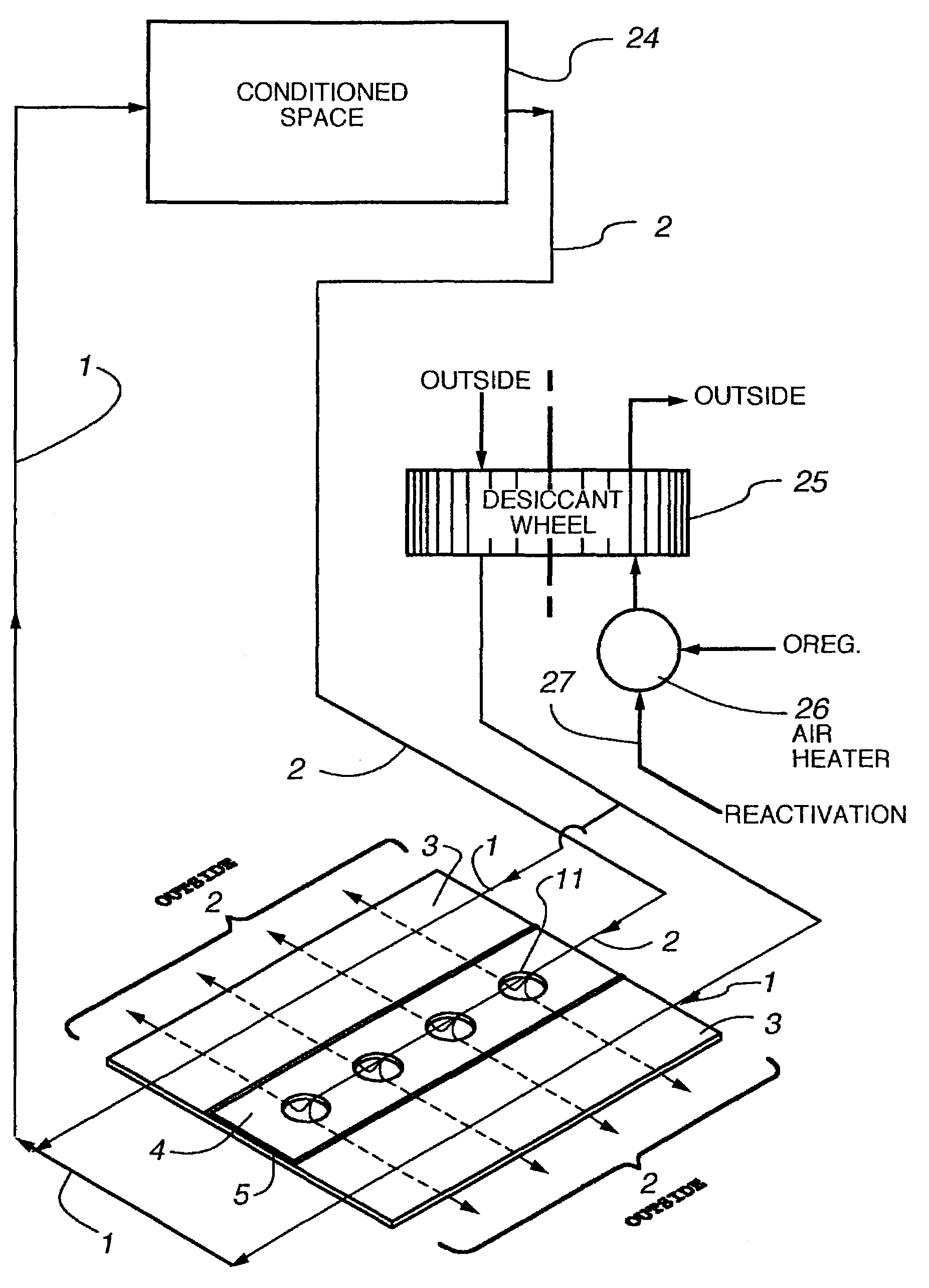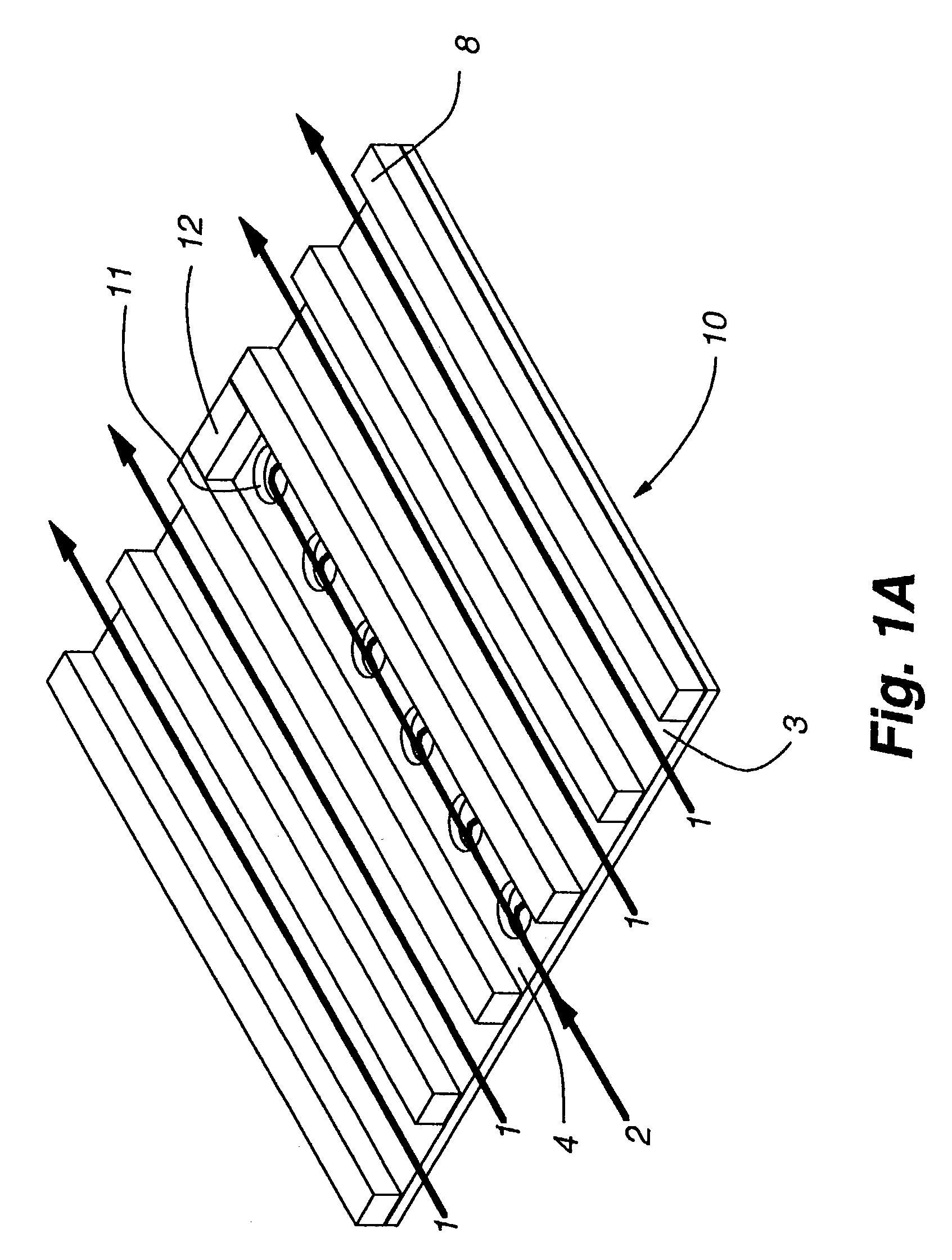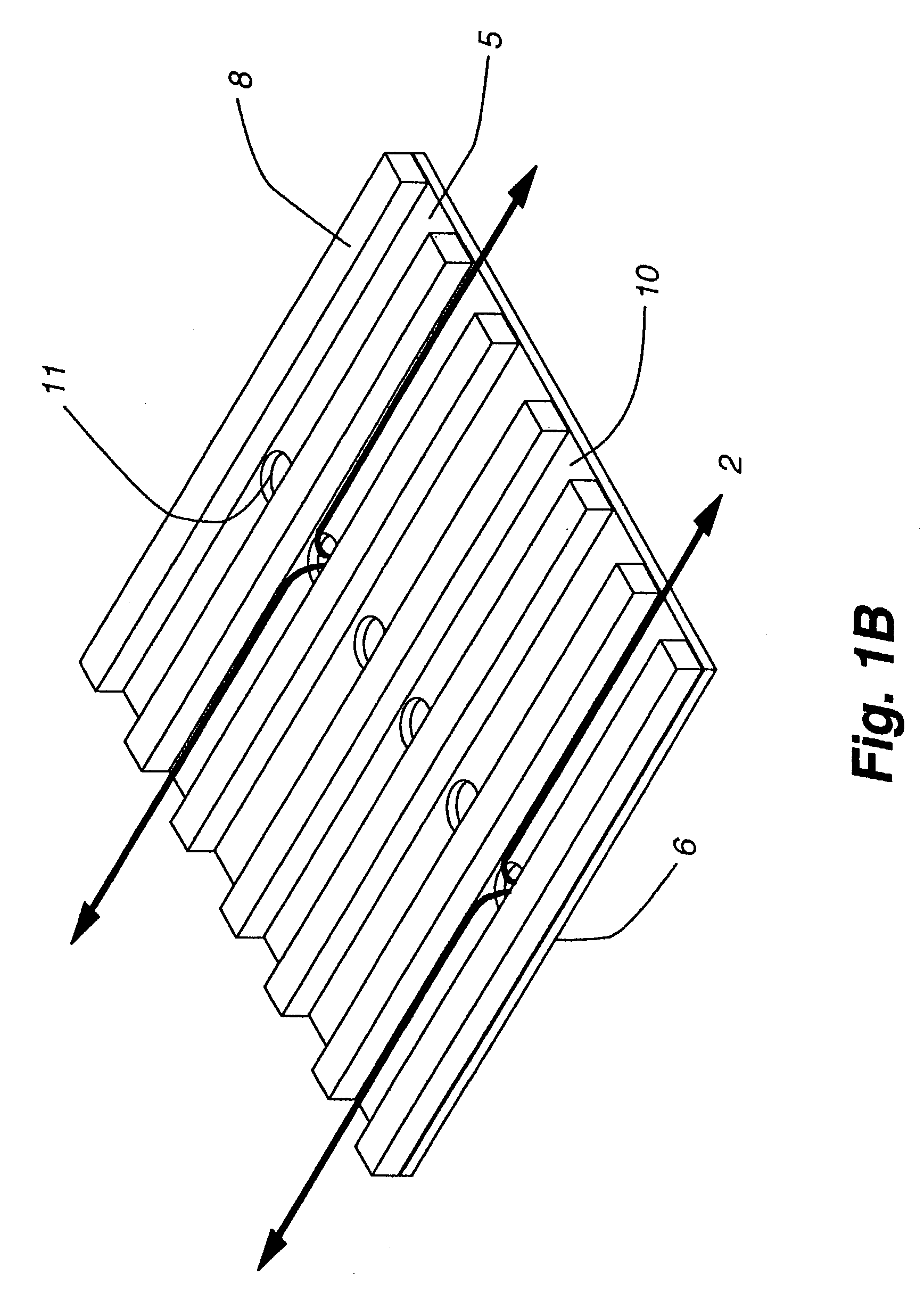Method and plate apparatus for dew point evaporative cooler
a technology of evaporative cooler and plate apparatus, which is applied in the field of evaporative fluid conditioning, can solve the problems of insufficient availability of residential or after market evaporative cooler, inconvenient use, and inconvenient use, and achieve the effect of small pressure drop
- Summary
- Abstract
- Description
- Claims
- Application Information
AI Technical Summary
Benefits of technology
Problems solved by technology
Method used
Image
Examples
second embodiment
[0064]FIG. 1a is a three dimensional perspective and schematic representation of the element of the invention. In this embodiment, plate 6 has perforations 11 along one side rather than down the middle, as in the previous embodiment. Channel guides 8 create channels 3 and 4. In this embodiment, channel guides 8 are ribs, but they may be other types of guides, as previously discussed. Channel guide 8 also serves to prevent flow of gases off of one edge of plate 6. Working gas stream 2 flows in channel 4, product stream 1 flows in channel 3. Gas stream 2, the working gas, flows through perforations 11 to channel 5 (not visible), and then flows across the obverse side of plate 6 to depart plate 6 as gas stream 2.
third embodiment
[0065]FIG. 2 is a three dimensional perspective and schematic representation of the invention, showing the gas flow path when the invention is used to warm and humidify an air stream with water. Thus, in this embodiment and those following, the gas steams may be referred to as air streams, and the cooling liquid will be assumed to be water. In winter months, it is advantageous to exchange heat between exhaust air leaving a warmed space and cold fresh air being brought in from the atmosphere, i.e. the out door air or other source of environmental air. This reduces the heat required to warm the fresh air. The present invention also allows the addition of humidity to the fresh air, thus addressing another winter problem: cold outside air that has condensed moisture out and therefore has a low absolute humidity or extremely dry air that results in dry inside air as the moisture on the inside reduces with fresh air changes with the outside. The “cycle selection” as to which stream of air...
fifth embodiment
[0071]FIG. 4 is a partially three dimensional perspective and schematic representation of the flow path of the invention showing the gas flow when the invention is used with recirculating gas steams, and further showing the gas flow in the context of use. In this embodiment of the invention, air from a conditioned space is cooled again and returned as the product fluid. This results in a saving of energy and additional cooling of the product air stream.
[0072]Plate 6 has channel guides, channels, and a plurality of perforations collectively numbered 11. Air stream 1 emerges from desiccant wheel 25 before passing over the dry side of plate 6 in channels, where it transfers heat to plate 6 by conduction. Air stream 1 is then passed to conditioned space 24 and eventually recirculated to desiccant wheel 25.
[0073]Channel guides segregate working air stream 2 from product air stream 1 after desiccant wheel 25. It passes through channel, where it rejects heat to plate 6 and flows through pe...
PUM
 Login to View More
Login to View More Abstract
Description
Claims
Application Information
 Login to View More
Login to View More - R&D
- Intellectual Property
- Life Sciences
- Materials
- Tech Scout
- Unparalleled Data Quality
- Higher Quality Content
- 60% Fewer Hallucinations
Browse by: Latest US Patents, China's latest patents, Technical Efficacy Thesaurus, Application Domain, Technology Topic, Popular Technical Reports.
© 2025 PatSnap. All rights reserved.Legal|Privacy policy|Modern Slavery Act Transparency Statement|Sitemap|About US| Contact US: help@patsnap.com



